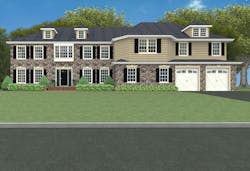In the remodeling industry, lowering costs, increasing efficiency, and improving client satisfaction usually top the list of company goals. By incorporating a “virtual showroom” for the design and development process, we have been able to address all of these goals with our clients. The use of 3D design, web meetings, social media platforms, and online stores make this all possible.
Virtual showrooms do not eliminate the face-to-face contact that is still necessary in remodeling sales, but they enhance the buying experience when professionally orchestrated. Development and construction agreements will always require face-to-face meetings.
Starting your virtual showroom
Virtual Pinboards: Pintrest and Houzz, specifically, are online resources that do more than just display your projects and increase SEO. Homeowners can scroll through an endless array of project pictures and pin what they like best. These sites also open up the discussion of cost for “wish list” items and will help establish a realistic budget.
We find a candid discussion about these items early in the design process makes for a more pleasant experience during construction. We encourage our clients to research these websites before our initial meeting and share their accounts with us for development.
Virtual Meetings: We use GoToMeeting software to hold online meetings with our clients during development. This useful tool allows us to reduce the need for night and weekend meetings. In addition, meeting on the Web allows us all to be in different locations at one time. We can be at a jobsite while a husband and wife are each on lunch breaks from work, or when a child is napping. The meetings can be recorded and reviewed so no items are missed, and notes are not required.
Virtual Reality: Chief Architect software allows us to create photorealistic, 3D designs that assist homeowners in their selection process. In conjunction with GoToMeeting, we review preliminary floor plans with clients to ensure we are on the right design path. Once they are set, we can add the design and color elements shared through Pintrest and Houzz, and present a portfolio of color images that depict how their home is really going to look.
We have found that an improved visual element in design has increased our conversion of development agreements to construction agreements. In addition, add-ons like upgraded trim and lighting packages can be sold during development. This makes a more efficient production process by minimizing change and schedule alterations.
Virtual Stores: You can create online stores directly on your website for clients to purchase products. You can partner with suppliers or global commerce sites to create product lists. This is a new area that we are developing for 2013, but we are already seeing the benefits it is creating. It speeds up the shopping and selection timeline by eliminating travel to stores, and we can have better control over product selections and lead time while creating a supplemental revenue stream.
Virtual Design Team: You may like the idea of adding these virtual elements to your business but do not have the financial resources to purchase the software and provide additional staffing and training. If this is the case, you can consider outsourcing. We provide these services on a per-project basis without ever visiting the jobsite or your office. The cost for the service is added to the project and not company overhead. PR
